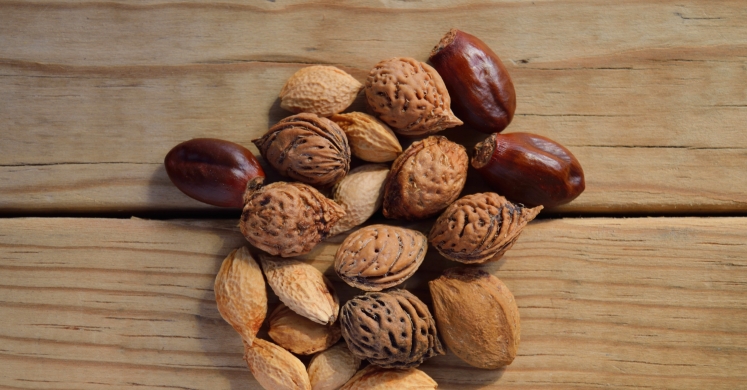Blog

Ask Ginger: High Fat Content in Nuts
You've got questions ... we’ve got answers! Email your queries about healthy foods, physical activity and screen time for kids and Ginger will answer them here on the Phipps blog.
Q: I’ve heard that nuts have a high fat content. Does this mean that I should limit my consumption? (Brad, Highland Park)
A: Great question! Nuts do contain a high fat content, but don’t let that keep you from enjoying them in moderation!
It is important to recognize that four major dietary fats exist in the foods we eat. These include saturated fats, trans fats, monounsaturated fats and polyunsaturated fats. These four types of fats have different chemical structures and physical properties, but each has nine calories per gram. Saturated fats and trans fats are typically solid at room temperature and raise bad cholesterol (LDL). Foods like butter, cream and fatty meats are typical sources of saturated fats, while processed baked goods, crackers and fast foods are high in trans fats. Monounsaturated and polyunsaturated fats are usually liquid at room temperature and lower LDL. Nuts, avocados, olive oil, canola oil and sunflower oil are the most common examples of foods containing monounsaturated and polyunsaturated fats.1
The body needs fat to support cell growth and for energy, and fat helps the body absorb some nutrients. It is important to consume foods with monounsaturated and polyunsaturated fats, and limit saturated and trans fats. A diet focused on fruit, vegetable and whole grain intake, along with a variety of low-fat dairy, poultry, fish, legumes and nuts will help meet dietary needs and improve heart health.1
Nuts are also rich in fiber which helps lower cholesterol and makes you feel full, and Vitamin E which reduces plaque development in arteries. Walnuts and flaxseeds are great sources of omega 3 fatty acids, which help reduce triglyceride levels and are linked to a reduced risk of heart disease.2,3
While nuts are a great source of healthy fats, they are calorically dense; this means that proper serving sizes are essential. The Academy of Nutrition and Dietetics recommends replacing foods from your diet higher in saturated fat with a one ounce serving of nuts. Below are several one-ounce equivalents:
- 167 pine nuts
- 49 pistachios
- 35 peanuts
- 23 almonds
- 21 hazelnuts
- 19 pecan halves
- 18 medium cashews
- 14 walnut halves
- 10 macadamias
- 6 medium Brazil nuts
Keep in mind that manufacturers often add salt, sugar and hydrogenated fats to alter the flavor of nut products, so it is important to read the ingredients list before purchasing. Opting for products with fewer additives will maximize the health benefits! To incorporate nuts into your diet, we have a few more simple tips.2,3
- Create your own trail mix with your favorite nuts and dried fruits. Package into snack sized containers.
- Add chopped walnuts or almonds to yogurt for a crunchy topping.
- Add peanuts or cashews to a stir fry dish.
- Spread 2 Tbsp. natural peanut or nut butter onto celery sticks. This makes a great snack!
- Add pine nuts to pastas and salads for a light, delicate flavor.4
For more information regarding nuts and dietary fats, visit the American Heart Association or the Produce for Better Health Foundation.
Sources:
1. American Heart Association: Dietary Fats
2. Academy of Nutrition and Dietetics: In a Nutshell
3. Harvard Health: The truth about fats: the good, the bad, and the in-between
